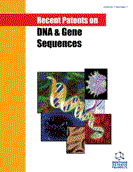Abstract
Redox control is an important determinant of cellular function and viability. The thioredoxin system is a major antioxidant system that influences cellular redox state, stimulates cell growth, inhibits apoptosis, activates numerous transcription factors and regulates immune function. Both over and under expression of the thioredoxin system can result in a disease phenotype and therefore it has been the target of many therapeutic strategies. High levels of thioredoxin expression have been associated with aggressive cancers, poor patient prognosis and resistance to some chemotherapy treatments. In contrast, low levels of thioredoxin can cause diseases that develop because of an imbalance between antioxidant systems and oxidative stress, stimulants. A number of recent patents and patent applications have been published that describe inventions that either inhibit or enhance thioredoxin functionality. Thioredoxin expression levels have been decreased through antisense approaches and thioredoxin functionality has been inhibited by synthetic compounds or by stimulating the production of VDUP1, a natural thioredoxin inhibitor. Strategies designed to enhance thioredoxin functionality include the addition of recombinant thioredoxin or using gene delivery to treat hepatic disease, inflammatory bowel disease, cardiovascular disease, skin damage or cystic fibrosis. Mutant thioredoxin molecules that target specific pathways or that exhibit increased stability are also utilised.
Keywords: Thioredoxin, oxidative stress, redox control, antioxidant, apoptosis, cancer, inflammatory disease, VDUP1, therapeutic, chemotherapy
 7
7











